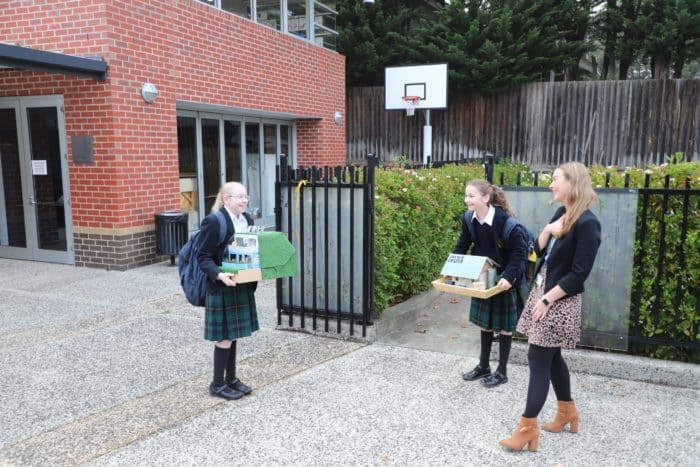In the media: The Education Review 4 June
It is with considerable excitement and a heightened sense of vigilance that Victorian schools have begun the staggered return to face-face learning for students, after more than six weeks of conducting the biggest education experiment this country has ever seen.
As a school principal, I know that there have been many learnings for school leaders from this period of lockdown, but the one that unquestionably stands out the most for me is the revelation that our school communities are remarkably resilient, adaptable and innovative when a crisis situation arises.
This is why I feel confident that Victorian schools will manage the return to onsite learning with the same fortitude and creativity that has helped us to manage the unprecedented test of educating our children in their own homes, often alongside their siblings and working-from-home parents, for the past few weeks.
I’m also confident because I know that schools have been preparing for this transition back to onsite learning since day one of school closures. For the last couple of months, schools have been rigorously reviewing education guidelines and medical advice, conducting risk assessments and keeping the academic and welfare outcomes of students the top priority, as always.
So what can parents, students and teachers expect as we return to a new normal at school?
Well firstly, some of the most visible changes will be at the school gate. Keeping our schools safe from COVID-19 means minimising the number of people on site, so parents are being asked to drop off and pick up their children without entering the school grounds themselves. Schools have quickly mobilised to manage this arrangement, nominating specific times and entrances for different student groups
Student entry to school grounds each morning as well as lunch and other break times are staggered to minimise physical contact, and as you would expect, an emphasis on hand-washing and personal hygiene is now an important part of the new school day. These are all logistical changes that we’ll quickly adapt to – but will our classrooms look different to how they did pre-COVID-19?
The advice of Victorian health and education departments is that children will not be expected to socially distance at school once they have entered the classroom. However, Strathcona, like many other schools, is doing its best to set up classrooms and remind students to physically distance as much as possible. Additionally, staff have been relocated where necessary so that they can have physical distance from each other.
While the return to the school routine is being welcomed by the majority of teachers, parents and students. I also expect there will be an element of grieving that accompanies it. In my own school community, teachers have reported their joy in experiencing the increased engagement and involvement of parents as they’ve worked as partners with teachers in their child’s learning during this time. Many parents have echoed this sentiment — having a greater appreciation for the nuances of their child’s learning style and needs, and realising the powerful role they play in their child’s success as a learner. They have also communicated a heightened respect for the teaching profession.
And while students themselves will be excited to resume face-to-face friendships with their peers, they may miss the altered pace of at-home learning, and time spent with their family.
Many have enjoyed the independence and self-agency this mode of learning has afforded them. Schools will need to be cognisant of this as they support students in the transition back to regular learning.
After this extraordinary time of adaptation and innovation, it makes sense that schools should analyse and build on the successful teaching and learning methodologies that emerged under these remote learning conditions.
We will need to find ways and time to capture and document these successes of course, but the potential to harness these transformative experiences to improve teaching and learning in the future shouldn’t be underestimated.
It is certainly a focus of discussion in our school as we want to leverage the positive things that have been learned through this experience. It has also taught us what is precious about school communities and what we must ensure we preserve. That is mostly our sense of community and connectedness with each other.
From my own perspective, I’ll be looking to strengthen the collegial relationships that have developed with my principal colleagues as we’ve navigated these uncertain times together – sharing ideas and advice with a generous spirit of professional camaraderie.
We have all learned much from each other and, in this next phase, we shall exchange ideas on how to lead our schools so they really do become places of learning suitable for the third decade of the 21 century. I will also be taking the time to acknowledge and thank my staff, and parents and students of our school community, for the fortitude, goodwill and adaptability they have shown throughout this unparalleled experience.
Marise McConaghy is principal of Strathcona Girls Grammar


